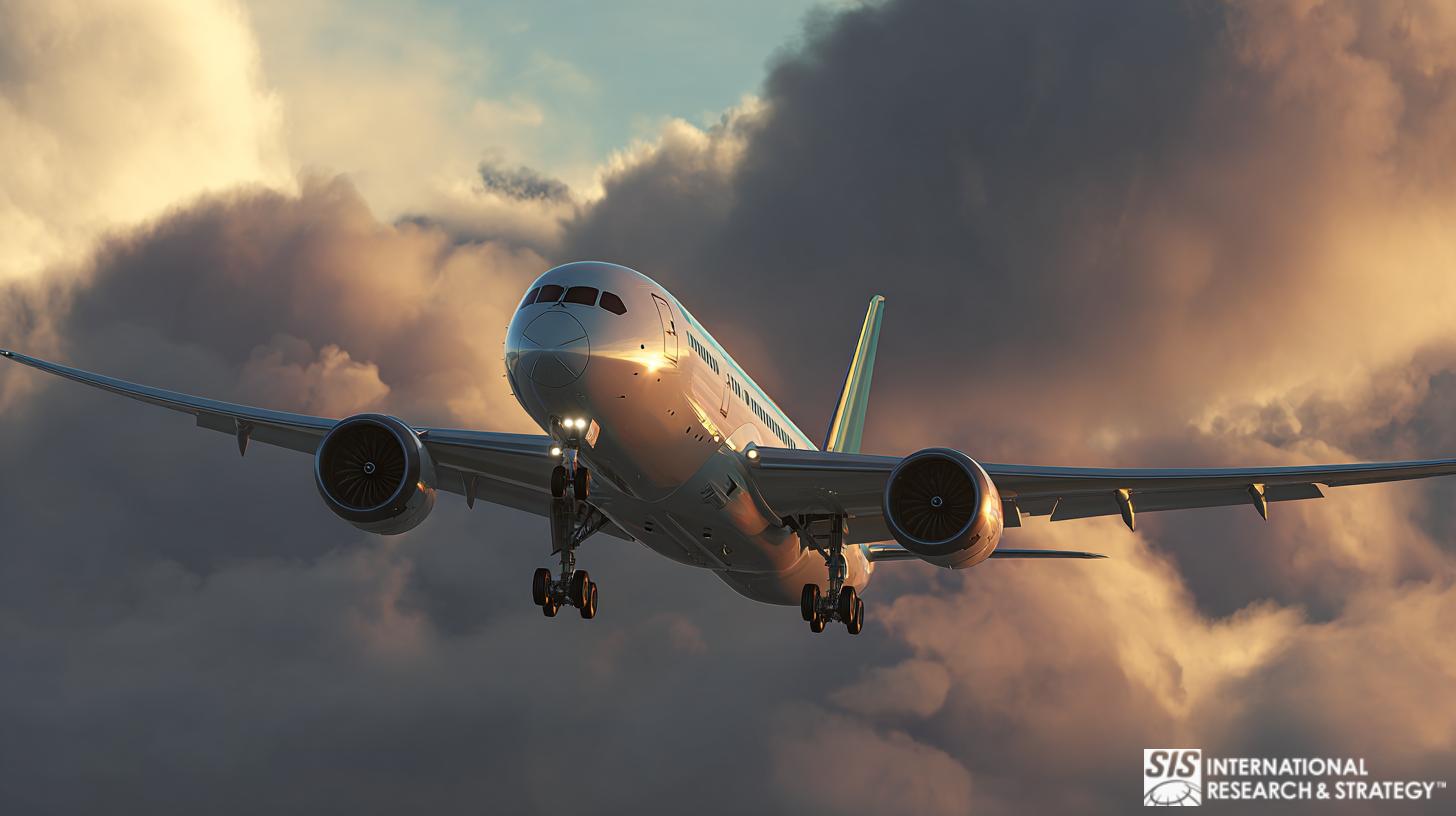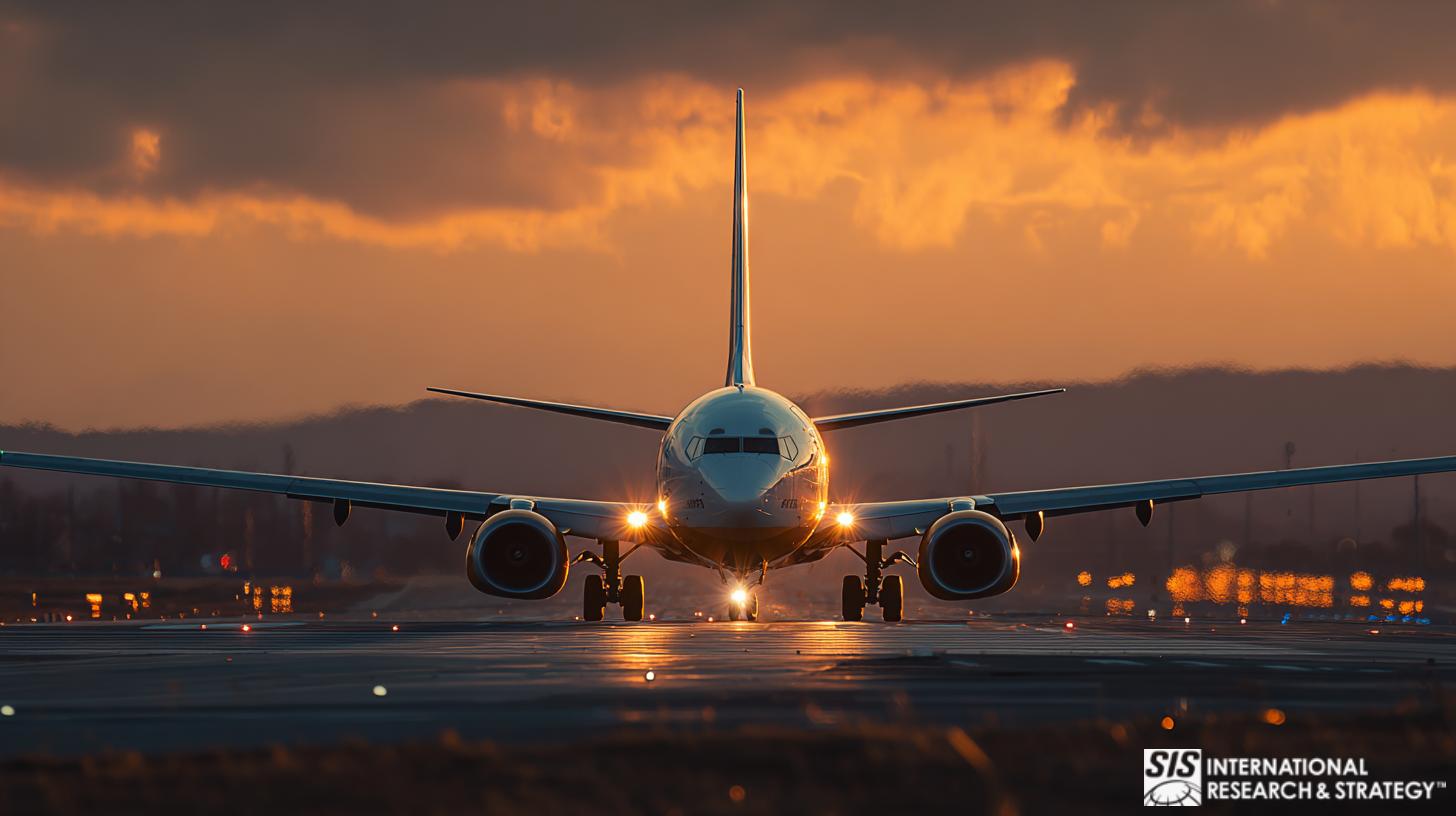
The aeronautics industry is a main contributor to national security, commerce, and transportation. It is considered as a technology driver that leads to spin-offs of advanced technology products and comprised of three major sectors: airframe, engine, and equipment.
The market is composed of civil aeronautics of aircraft used for domestic commerce and civilian air transport, and military aeronautics includes air arms for the military aviation of countries.
Mercado Aeroespacial dos Estados Unidos
Since World War II, U.S. aircraft, engines, and parts have dominated the domestic and foreign markets for subsonic transports, general aviation, commuter, and military aircraft. US technology and products are also the drivers for the development of global transportation infrastructure like airports and air traffic management systems.
Atualmente, a indústria aeronáutica é o maior contribuinte industrial positivo para a balança comercial dos EUA, desempenha um papel vital na manutenção da segurança e conveniência das viagens aéreas em todo o mundo e fornece contribuições importantes para a defesa dos interesses dos EUA, tendo voado mais partes isoladas do mundo.

A Companhia Boeing
The Boeing Company is one of the largest manufacturers of commercial jetliners and military aircraft. It designs and manufactures rotorcraft, electronic and defense systems, missiles, satellites, launch vehicles, and advanced information and communication systems, and operates Space Shuttle and International Space Station for NASA, and provides military and commercial airline support services. It operates in more than 90 countries around the world and is one of the largest U.S. exporters in terms of sales.
Boeing is headquartered in Chicago and employs more than 160,000 people across the United States and in 70 countries. Currently, it is expanding product lines and services developing more commercial airplanes, military platforms, defense systems, and the war fighter through network-centric operations; creating advanced technology solutions that reach across business units; e-enabling airplanes and providing connectivity on moving platforms; and arranging financing solutions for our customers.
Mercado Aeroespacial Europeu
The region is presently struggling to keep pace with the strong increase in mobility and demand. However, the region is the main competitor of the US in terms of air travel over medium and long-haul routes. EU states are now increasing their funding to support and fund research initiatives to meet market demands and grab potential opportunities in the industry.
Airbus SAS
A Airbus é um fabricante líder de aeronaves, fornecendo linhas de produtos como o jato A318 de corredor único com 100 assentos e o A380 de 525 assentos, o maior avião civil em serviço.
A Airbus expandiu-se para o setor de aeronaves de transporte militar com o elevador aéreo militar multifuncional A400M produzido sob a gestão da empresa Airbus Military, substituindo frotas antigas de C-130 Hercules e C-160 Transalls a partir de 2009. Além disso, aviões-tanque para em -As missões de reabastecimento e transporte em voo estão disponíveis em variantes de aeronaves derivadas do A310 e A330.
Tecnologias emergentes
As áreas de foco de pesquisa recente em aeronáutica incluem nanotecnologia, teste e avaliação de desenvolvimento, guerra centrada em redes, sistemas inteligentes e transporte aéreo ambiental.
Sistemas de aeronaves e equipamentos com otimização de energia
Air craft technologies are related to the design and integration of energy-consuming Aircraft Equipment Systems (AES). These systems are located under the floor, inside wings, and behind panels, essentially ensuring performance, safety, and controllability.
Novas configurações de aeronaves avançam os componentes disponíveis e a integração desses sistemas para introduzir possibilidades de maior eficiência em termos do seguinte:
- Controle ambiental e todos os aspectos do gerenciamento térmico
- Atuação de controle de vôo proteção contra gelo e chuva
- Trem de pouso e frenagem
- Electrical, hydraulic, and pneumatic generation and distribution
- Geração de energia auxiliar e emergencial
- Sistema de combustível de aeronave
- Suporte do motor
- Iluminação, cabine e água/resíduos
Nanotecnologia
As áreas ativas de pesquisa na indústria aeronáutica incluem nanodispositivos e sistemas, nanoeletrônica, nanofabricação, nanomateriais, nanosensores e os aspectos ambientais, de saúde e segurança da nanotecnologia. As atividades de pesquisa atuais incluem a capacidade de combinar múltiplas disciplinas “nano” para criar novas aplicações sinérgicas da nanotecnologia.
A Iniciativa Nacional de Nanotecnologia dos EUA como um campo em que a nanotecnologia tem potencial para permitir uma riqueza de inovação, particularmente em materiais/estruturas e bionanomateriais inteligentes na aeronáutica.
Transporte Aéreo Ambiental
A Iniciativa Tecnológica Conjunta Clean Sky reunirá as partes interessadas europeias em I&D para o desenvolvimento de projetos, motores e sistemas de veículos aéreos ecológicos para minimizar o impacto ambiental dos futuros sistemas de transporte aéreo.
Technologies will directly aim for the reduction of the amount of carbon dioxide (CO2) emitted by air transport, cutting specific emissions of nitrogen oxides (NOx) by 80% and decreasing noise levels. The targets reflect the Ultra Green High Level Target Concepts developed by the Advisory Council for Aeronautical Research in Europe (ACARE). Other focus areas include the reduction of soot, water vapour, and particulate emissions through alternative fuels; aircraft engine configurations, intelligent low-weight structures, improved aerodynamic efficiency, airport operations, and air traffic management as well as manufacturing and recycling processes.
Mercado Aeroespacial da Ásia
Relative to Europe and the Americas, Asia’s security situation is increasingly fluid. Emerging superpowers, weapons proliferation and nuclear tensions are key movements in the defense industry.
Increased nuclearization among Emerging Markets, particularly China, India, Pakistan, and Iran, has created geopolitical tensions and new demands for defense offerings. Meanwhile, political calls are growing in developed nations for collaborative efforts toward reduced nuclearization.
Conversely, weapons imports have grown dramatically in Southeast Asia over the past few years. Malaysia, Singapore and Indonesia are leading the growth with triple and double-digit growth in weapons imports.
In addition, defense budgets in Asia are on the rise. The rise is being led by regional tensions and a desire for more sophisticated technologies. Recently China has publicly announced its advanced capabilities to destroy ballistic missiles and demonstrated its defense capabilities in space.
Analysts expect increased demand from Asian governments. Asian companies may continue collaboration with established defense companies primarily in developed nations for cutting-edge weapons development.
Western aerospace and defense giants have emphasized their offerings of unmanned systems, aircraft, energy systems and cyber technology to, what industry giants consider one of their most important markets. While leadership in the defense industry is led by developed nations, industry observers are increasingly curious when Asia will be able to take a greater role in developing weaponry on a larger, more self-sufficient scale.
Problemas da indústria
Segurança e Qualidade de Vida
September 11, 2001 has shown the vulnerability of the air transportation system and the need for improved security. The long-term trend of growing numbers of commercial air operations demands a further reduction in the currently low rate of air transport accidents. Aviation safety and security pose numerous challenges to security personnel, operators, and aircraft designers. The public and aircrews must be protected both in the air and on the ground from danger and injury.
trabalhadores
A serious problem facing the U.S. aeronautics industry is attracting, educating, and retaining the next generation of aeronautical engineers. The aerospace workforce is aging, and a significant number of people are nearing retirement.
A idade média dos trabalhadores da produção é de 44 anos no setor comercial, 53 na defesa e 51 na NASA. Além disso, a proporção de trabalhadores com 30 anos ou menos caiu quase dois terços, de 18 por cento em 1987 para 6,4 por cento em 1999. Há uma preocupação crescente de que o actual número de estudantes no “pipeline” educativo não seja suficiente para atender às necessidades futuras da indústria aeronáutica.

